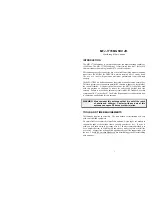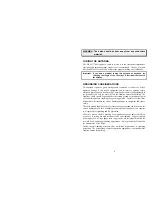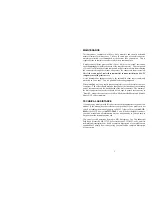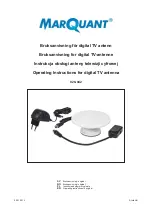
3
conductive rope tied to the center hole of the center insulator. The center
insulator should be the highest point of the antenna.
The ladder line should drop vertically from the center insulator for at least 10
feet and kept away from conductive objects. If the antenna's ladder line has to
be installed near conductive objects, space the line at least 6" from the object
with non-conductive supports (for example: PVC pipe standoff supports 6"
long). Use nylon cable ties to secure the feed line to the insulated supports.
Sloper Antenna
This antenna can also be used as a sloping dipole. This requires one tall support
and one short support. The center of the antenna must be at least 30 feet above
the ground in this configuration. The antenna radiates mainly in the direction of
the downward slope. The optimum angle of "slope" will varying with the
desired coverage distance and the frequency of operation, but will almost always
be somewhere between 45 degrees and almost vertical.
BALUN REQUIREMENT
The G5RV is a balanced antenna fed with a balanced 450 ohm line that
terminates in a SO-239 connector. When feeding this antenna with an
unbalanced line (such as coaxial cable), it is a good idea to use a 1:1 choke
BALUN at the coax to feed point connection. The balun will reduce or
eliminate parallel currents on the outside of the coax shield. This will prevent or
reduce RFI, RF feedback, RF burns, and other effects of excessive RF in the
station.
The best balun for this antenna is an
air-core choke balun
. Avoid using other
types of baluns, such as ferrite sleeve or transformer type baluns. This antenna
has a high reactive component at the feed point SWR of more than 2:1. The
high SWR increases loss in ferrites and may cause excessive core heating, core
saturation, or arcing in the windings.
AIR WOUND BALUN CONSTRUCTION
The air wound balun required for this antenna can be constructed by winding the
coaxial feed line cable in a single layer solenoid coil with at least 10 turns of 4
to 6 inch diameter. The turns can be taped or secured by nylon cable ties. The
balun can be wound on PVC pipe or any other non-metallic form. Place the
balun immediately at the feed point connection. The feed line shield should not
be grounded on the antenna side of the balun.























